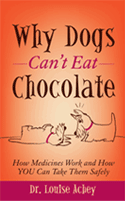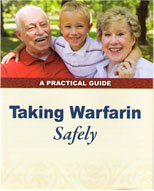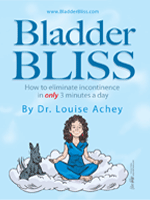Q: My doctor’s office wouldn’t refill my prescription over the phone; instead, they told me to contact my pharmacy. When I stopped in to pick up my refill the pharmacy told me they hadn’t heard back from the doctor yet, despite it being nearly a week since I’d requested it. When I called my doctor’s office to find out why, THEY told said their records showed it had been faxed 4 days ago, but the pharmacy says they never heard back. Who’s telling the truth?
Both of them are telling you their situation as they see it. Many doctor’s offices now instruct you “don’t call us, call your pharmacy” for any refills, and it’s so frustrating to get caught in the middle, with both sides claiming that it’s not their problem, it’s the other party that didn’t follow through. Trouble is, when you need your medicine refilled, when you run out it becomes YOUR problem.
It seems that today’s doctor’s offices only want to hear from your pharmacy if you need a refill, not you. There are three reasons for this. One reason is that a refill request sent to your doctor from your pharmacy has the important information about your requested refill already organized for the doctor, including which pharmacy to send the refill request to, saving your doctor a lot of time. Second, a faxed refill request doesn’t require a nurse or staff member to stop what they are doing, answer the phone, listen to you state your request, then write it down for the doctor to respond to later. It may not seem like very much time, maybe 3-4 minutes, but multiply that times the number of medicines prescribed by just one clinic and it really adds up.
Another very important reason is that the medication, dose and directions you are requesting may not be the same as what your doctor has on file for you. You might have seen a cardiologist specialist for a heart problem and they changed your medicine, or you may be asking for a refill of medicine that is managed by another doctor, and should be directed at another physician’s office instead. As a pharmacist, I often see medications coming from 2 or 3 doctors on the list of prescriptions we fill for our customers.
What’s supposed to happen when you run out of refills of your medicines? First, you call your pharmacy to request a refill, they then fax your doctor’s office with the details of what you are requesting, your doctor reviews it and responds with any changes and additional refill instructions, and then sends it back to your pharmacy, which fills it in time for you to pick it up or mail it to you before you run out of your medicine.
If only it always worked that way all the time. Why do your pharmacy and doctor’s office get into the blame game of, “I sent it? It’s not my problem?” What goes wrong?
These days, the medical community communicates both by manual and electronic faxing. Manual faxing involves walking up to a fax machine, sticking a piece of paper into it, dialing the number of the fax machine you want it to go to, then listening for a confirmation tone which will tell you that your fax was transmitted successfully to the fax at the destination you requested. With a manual fax, you can tell if your fax arrived or not. Electronic faxing is very different. You only need a computer, and when you click the fax button on your computer screen it your faxed request goes to a central holding area first before being transmitted. The main difference is that an electronic fax will only show that YOU SENT IT, not whether it arrived at its intended destination. And we “lose” electronic faxes every day, sucked into some black hole somewhere, never to arrive at their expected destination.
That’s why you get the “we’ve already sent it” response from both your pharmacy and your doctor’s office when you ask why your refill isn’t ready. It’s SO tempting to just go to the source (your doctor) and avoid dealing with us, your pharmacy, especially when communication breaks down. Instead, call ahead for refills to allow time for your pharmacy and doctor to communicate and re-fax each other if necessary.
Leave a Comment
Whoops… I dropped my pill and now I can’t find it! Has that ever happened to you?
Yesterday morning as I was opening up my pillbox one of my little pills launched itself right out of off my hand, landing on the kitchen floor somewhere near my left foot. That’s what it sounded like anyway. But after bending over I just couldn’t see it. I even went down on my hands and knees looking but it wasn’t anywhere I could see. Fifteen minutes of careful searching later, I finally faced the facts: that yellow capsule of vitamin D had disappeared.
Small children and pets can find pills on the floor. When you and your family are together for the holidays, are your children and grandchildren and pets safe from accidentally ingesting a dangerous dose of prescription medicine?
Many Americans take at least one prescription medicine. One survey done in 2008-9, found 9 out of every 10 Americans reported taking at least 1 prescription medicine within the previous month. 31% of all Americans take at least 2 prescription medicines and 11% take 5 or more prescriptions every day.
Unfortunately, it only takes 1 or 2 pills to trigger a tragedy. Most pain and heart medicines are designed for full-size adults, not inquisitive toddlers or small pets. Whether its pills on the floor or bottles on a table, little children and powerful pills don’t mix well.
With Christmas almost here, many families plan a visit over the hills and through the woods to grandma and grandpa’s house. But is grandma’s house safe enough for your little ones?
Here’s how to avoid 3 common causes of accidental ingestion:
1. Put pillboxes away when small children visit.
I like pillboxes for their convenience and ability to help us remember whether we have taken our medicines. Many of us keep them in plain sight to remind us to take our medicines, but they can be easily opened. For toddlers who are curious and quick, a pillbox can create an irresistible challenge, and one without a happy ending. Moving them out of reach or locking them up is more effective than trying to keep track of grandchildren when you’re visiting.
2. Remove pill bottles left out, especially any bottles or vials with “easy-open” tops.
Child resistant tops have saved many lives but they are a hassle to open especially if your grip strength is not what it used to be or you have arthritis. Designed to slow children down long enough to be discovered before they ingest their contents, one of the main reasons you get brand new prescription bottles with every refill is to ensure that their child-resistant lids don’t become worn enough to be easy to open. Dispensing prescriptions with child-resistant lids is strongly encouraged; if you don’t want them you must sign a waiver.
Even if they don’t sign a waiver to get “easy-open” lids, many older adults don’t use their child-resistant lids “correctly”. When they bring their prescription bottles in to the doctor or pharmacist to review, I often see prescription bottles with brand new labels but the lids replaced with older, more worn ones that turn easily. Other bottles have lids that are barely latched.
Still others, like my late mother-in-law, insisted on “recycling” her old pill bottles with their child-resistant tops into the toy box for her grandchildren to play with. As a young pharmacist and new parent I’d insist instead on sorting through the toy box first to gather up any pill bottles before letting my daughter Maureen play.
3. Lock up and carefully dispose of pain pills and patches.
Locking away pain medicine, especially narcotic or opioid medicine like Vicodin® and oxycodone can prevent tragedy. Teenagers report getting their supply of narcotic pain pills from their family and friends’ medicine cabinets. And medicines designed for adults weighing over 150 pounds are particularly dangerous to a 30-pound child or pet finding them on the floor or in a trash can. Nearly everything picked up by toddler or dog will find its way into their mouth, where enough powerful narcotics can be swallowed or sucked out to trigger a tragedy. Vacuuming floors where you may have dropped a pill and sealing up used patches by folding them together before disposal help ensure a safe holiday season. If the used patch contains a narcotic or opioid like fentanyl, the FDA recommends flushing it instead of leaving it in your trash.
Leave a Comment



